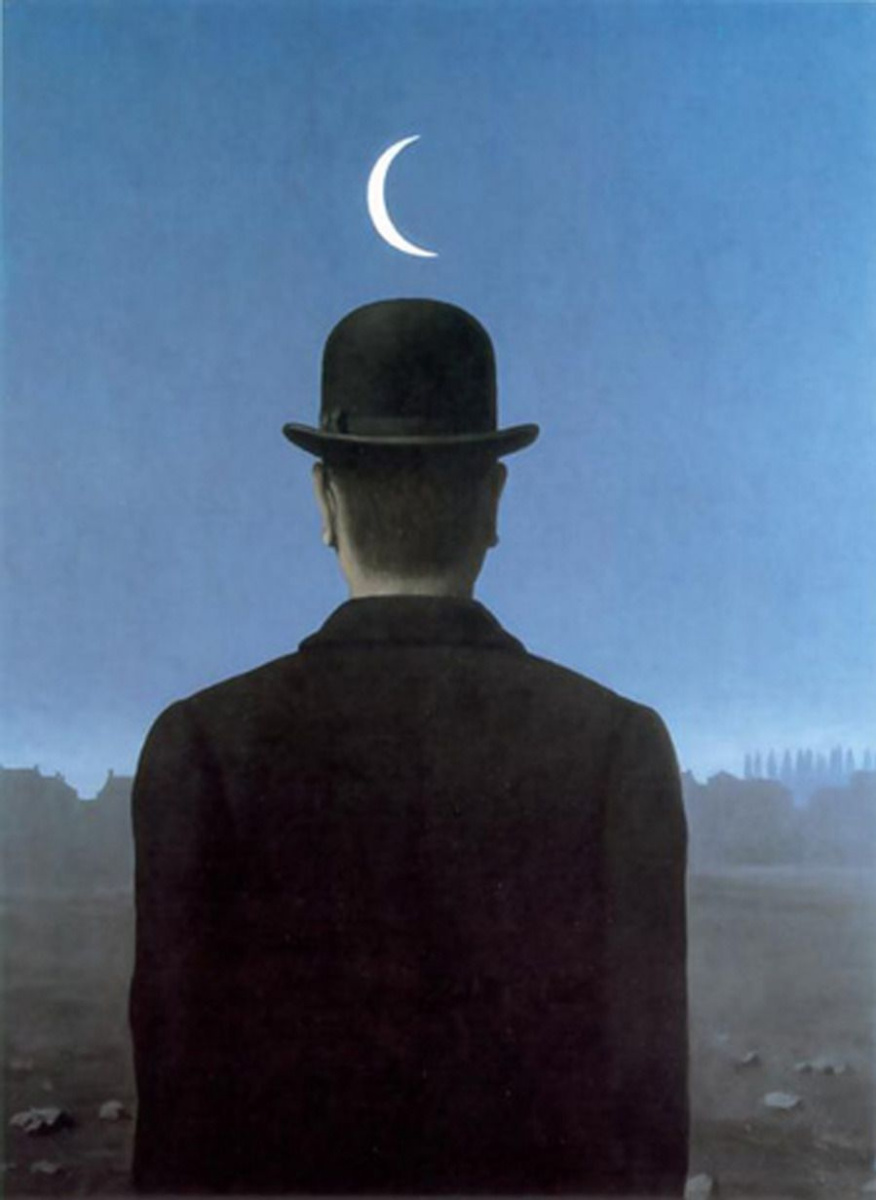log in
Enter site
Login to use Arthive functionality to the maximum
Teacher
René Magritte • Painting, 1954, 90×65 cm
Description of the artwork «Teacher»
Painting "Teacher" by Rene Magritte - one of a couple of dozen works dedicated to the image of a man in a black bowler hat. He first appeared on the canvas "Lonely Walker's Thoughts"In 1926, and a year later he decorated"The meaning of the night". After which the artist forgot about the mysterious character until 1951, when he again surfaced in “Pandora's Box". In 1953, Magritte makes a whole rain of men in bowlers in the painting "Golconda"- one of the most recognizable works of the Belgian. And then it was the Teacher's turn.
As with most of Magritte's other works with this repetitive image, including the iconic “Son of man”(1964), the viewer does not see his face. The man in black most often has his back turned, as in the case of the "Teacher", or his face is hidden by something else: for example, an apple or bird... Because of this mystery, the personality of the character began to be attributed to Magritte himself. And although in those paintings where he is still depicted from the front (for example, "Presence of the Spirit" 1960), the lack of similarity becomes obvious, the artist readily appropriated the image of a man in a bowler hat, which has become a corporate style. He even got a matching headdress and often posed for photographers in it.
Most likely, this is a generalized image of an average citizen, which may be one of the reasons why there is no need to show his face - anyone can be in his place. In the case of the painting "The Teacher" the same can be said about its title, since it has absolutely nothing to do with the plot and with the same success it could have been called "Engineer" or "Musician" - little would have changed from this. Someone unknown would have continued to stand in the light of a young moon in the middle of a desert country.
Although in fact Magritte was extremely puzzled by the titles of his works, it often took him a lot of time and searches. He strove to ensure that they did not offer easy solutions for interpretation. For example, he once dropped the name Curtain Cords for a mountain painting because it might have been associated with climbing rope. “The names of the paintings are not explanations, and the paintings are not illustrations of the names,” he said. "The connection between the name and the image is poetic, that is, it only reflects some features of the topic that we usually do not realize, but sometimes we intuitively understand when unusual events occur that cannot be explained logically."
The author: Natalia Azarenko
As with most of Magritte's other works with this repetitive image, including the iconic “Son of man”(1964), the viewer does not see his face. The man in black most often has his back turned, as in the case of the "Teacher", or his face is hidden by something else: for example, an apple or bird... Because of this mystery, the personality of the character began to be attributed to Magritte himself. And although in those paintings where he is still depicted from the front (for example, "Presence of the Spirit" 1960), the lack of similarity becomes obvious, the artist readily appropriated the image of a man in a bowler hat, which has become a corporate style. He even got a matching headdress and often posed for photographers in it.
Most likely, this is a generalized image of an average citizen, which may be one of the reasons why there is no need to show his face - anyone can be in his place. In the case of the painting "The Teacher" the same can be said about its title, since it has absolutely nothing to do with the plot and with the same success it could have been called "Engineer" or "Musician" - little would have changed from this. Someone unknown would have continued to stand in the light of a young moon in the middle of a desert country.
Although in fact Magritte was extremely puzzled by the titles of his works, it often took him a lot of time and searches. He strove to ensure that they did not offer easy solutions for interpretation. For example, he once dropped the name Curtain Cords for a mountain painting because it might have been associated with climbing rope. “The names of the paintings are not explanations, and the paintings are not illustrations of the names,” he said. "The connection between the name and the image is poetic, that is, it only reflects some features of the topic that we usually do not realize, but sometimes we intuitively understand when unusual events occur that cannot be explained logically."
The author: Natalia Azarenko



